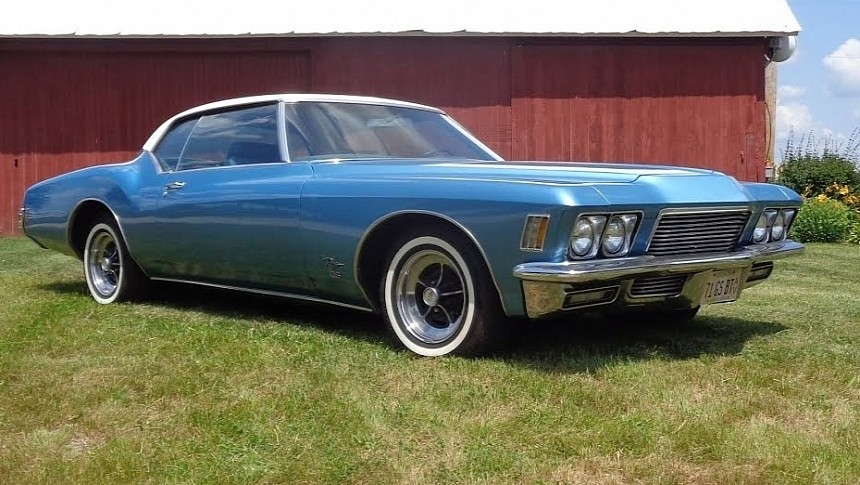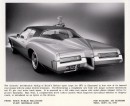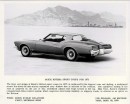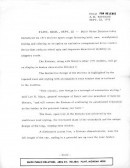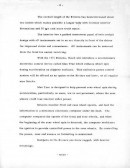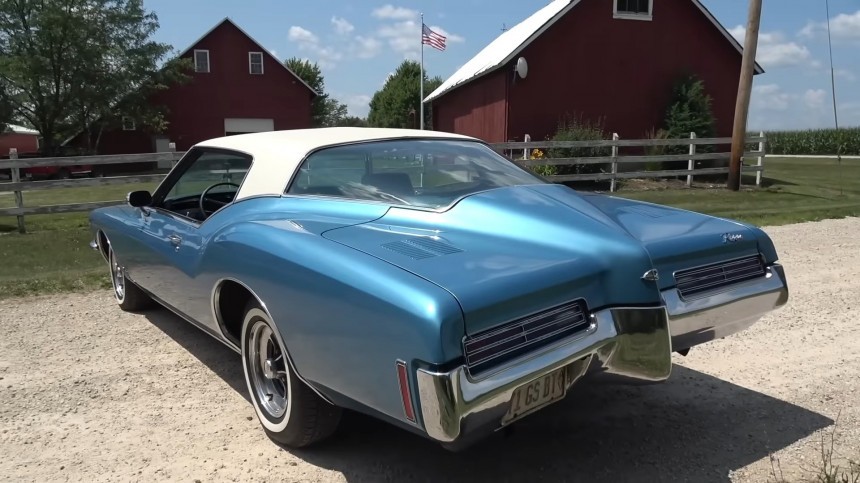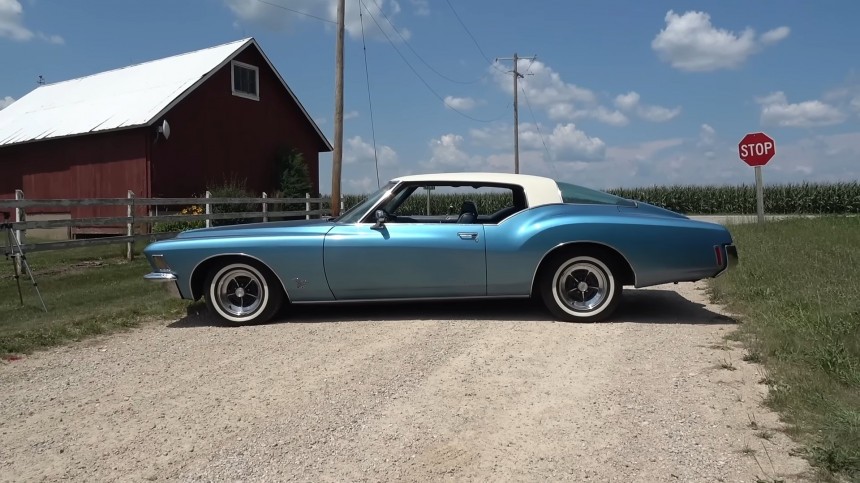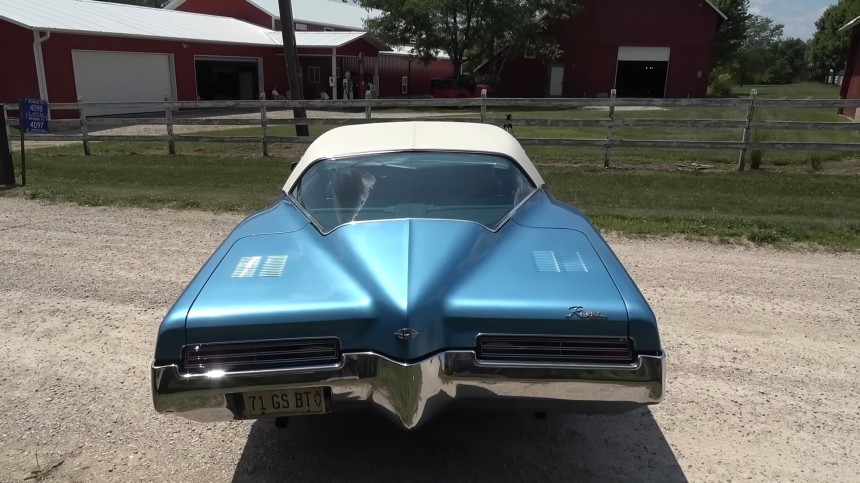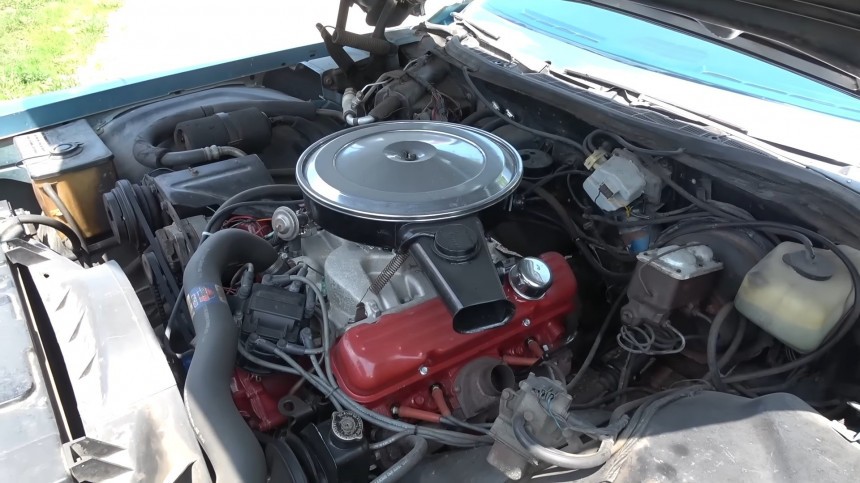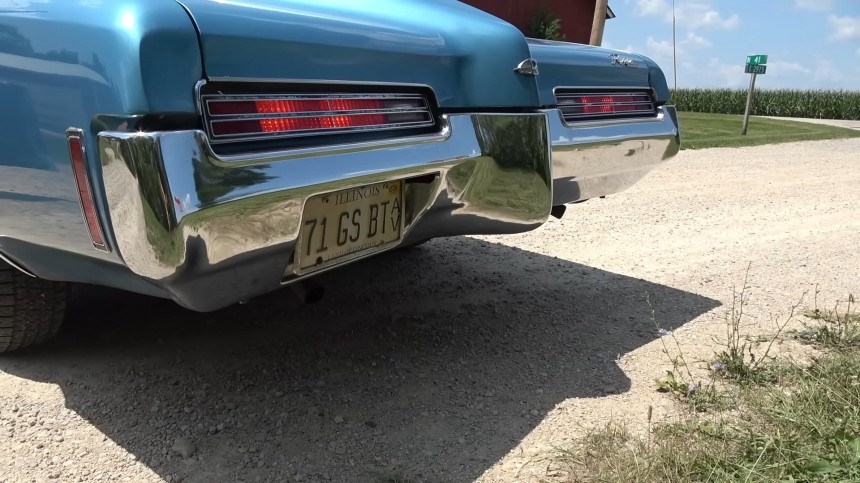General Motors was at the top of its game at the closing of the seventh decade of the past century. The corporation was the biggest carmaker in the world, the largest private employer in the USA, and a formidable (economic) force of the greatest economy in the world. But in September of 1970, the giant auto company took a direct hit that shook the entire nation. It also cast a dark spell over one of America's most illustrious makes - the Buick Riviera.
Nearly 350,000 strong, the workforce at GM walked out from their stations on September 14, 1970. The strike lasted 67 days, the corporation lost over one billion dollars in profits, and the American federal budget watched another billion in tax revenue disappear (with additional several hundreds of millions in retail sales).
It was one of the most intense moments in GM’s history, and the automotive-centric American economy quickly showed its weak spot. At the time, a reported one in six jobs in the United States was related to the carmaking business. Over two months of complete cease of production at GM was not a minor deal at all.
The car company didn’t take the strike too seriously at first – just one week after the walkout, Buick announced the 1971 model year Riviera. The company also stated in a press release (read it in the gallery, if you will) that the cars were to arrive in showrooms later that year, in October.
Obviously, that didn’t happen since the workers’ protest ended in late November. Still, the car made it onto the roads with a severe delay, a bad omen for some. Eerily coincidental, the first year of the third-generation Buick Riviera nose-dived, and one critical reason is the car’s radical styling.
1971 was the first year of the boattail for the famous nameplate of the luxury car from Buick – a reminiscence of Bill Mitchell’s acclaimed 1963 Sting Ray of Corvette’s second generation. That’s right; the one-year-only split-window ‘Vette was still in the heart of GM’s head designer.
The Riviera got a similar rear-end treatment, except it sat on a frame the size of a flatboat. Naturally, the front end received a naval-sized powerplant, the gargantuan V8, with its 455 cubic inches (7.5 liters) of gasoline-avid displacement. Unfortunately, the combination of a squared-off front half and the sleek and undulating lines on the back was a powerful aroma and not to everyone’s taste.
That could be the other reason why only 33,810 cars were constructed, 19,000 less than in 1969 (and down over 3,000 from 1970). And it wasn’t like the big Buick didn’t have anything to brag about – the third-gen Riviera introduced a revolutionary safety feature that is commonplace today in almost any make and model.
Buick called it Max Trac – a basic computer-governed traction-controlling aid that minimized fishtailing or rear-end swerves. The heart of the system was a solid-state power controller that read the speeds of the front and rear wheels. If the difference exceeded a predetermined value, the computer would modulate the ignition to send less power to the driven wheels at the rear. The driver only had to flip a switch on the dashboard just above the clock to activate or deactivate the traction computer.
One of those early non-slipping Buicks made it unmolested to this day, and it is featured in the two videos below. The Gran Sport option makes it even more attractive than its wheel-taming transistorized computer - only 3,175 Buick Rivieras had the “GS” badging on the front fenders in 1971.
There’s a reason why this automobile stars in two of Lou Costabile’s videos: this car was bought in 1989 by a man named Terry Peshia. In 2018, Terry – an avid motorhead and owner of a nice collection of American classics – was called upon to teach the seraphs and cherubs a thing or two (thousands) about internal combustion.
The man’s granddaughters are now in charge of the family piston heritage, and one of the girls is broadly smiling with nostalgia when talking about her “Popa” and his cars. Almost nine years ago, the same Riviera was the star of one of the vlogger’s YouTube videos, and we can notice several things.
First, the car hasn’t been driven much – the miles record on the odo says 44,828.4 in 2014 and 44,828.7 in 2023 (72,128 kilometers) - which is curious given that the owner says the car gets driven regularly. Secondly, the engine received a new Edelbrock intake manifold and an HEI distributor; the air cleaner cover now sits upside up, and the hot air duct to the intake is gone.
In 2014, the Riviera shows its chromed air filter lid flipped over to increase the cold air volume going to the four-barrel carburetor. It was a neat cheat to give the 455 a slight power boost, and it had the pleasantly surprising effect of altering the burbly grunt of the exhaust.
Now, that audible detail leaves some room for speculation as to whether this engine has been cammed or not – the idle is a bit choppier than a regular ’71 Riviera GS. It sounds as good as Led Zeppelin’s ‘Kashmir’ intro riff (even if allegations of tweaking the exhaust hotrod-wise lurk in the background).
OK, maybe ‘regular’ doesn’t exactly do justice to the torque powerhouse. The big-block V8 was Buick's thin-wall construction, which was some 150 lbs/68 kilograms lighter than Chevy’s 454 cubic-inch (7.5 liters) big-block. The Buick mammoth was only twenty pounds fatter than Chevrolet’s most famous small-block, the 350-CID / 5.7-liter motor.
All in all, this Riviera Gran Sport left the factory with a net firepower rating of 265 hp (269 PS). The lowly numbers are easily explainable by the switch from gross horsepower to SAE net measurements. In old-style muscle parlance, the Riviera was good for 330 hp (335 PS) and 455 lb-ft (617 Nm). The net torque score sat at 385 lb-ft (522 Nm) and was absolutely necessary to move the 2.2-ton large barge around.
As we can see, this example is a wonderful survivor – minus the differences noted above – and it wears its time scars with pride. The transmission, just like the engine, was single-offer: Turbo-Hydramatic three-speed automatic, mated to a 3.42:1 rear on the GS-equipped Rivieras.
Buick put high hopes in the Riviera’s third generation, and many people that grew up in the 'Groovin' 60s and 70s felt like these All-American 'Luxo-Barges' personal luxury cars would float out of Detroit forever. The strike of 1970 was perhaps an alarm signal, and cars like this are a part of history. Great history, but history nonetheless.
It was one of the most intense moments in GM’s history, and the automotive-centric American economy quickly showed its weak spot. At the time, a reported one in six jobs in the United States was related to the carmaking business. Over two months of complete cease of production at GM was not a minor deal at all.
The car company didn’t take the strike too seriously at first – just one week after the walkout, Buick announced the 1971 model year Riviera. The company also stated in a press release (read it in the gallery, if you will) that the cars were to arrive in showrooms later that year, in October.
1971 was the first year of the boattail for the famous nameplate of the luxury car from Buick – a reminiscence of Bill Mitchell’s acclaimed 1963 Sting Ray of Corvette’s second generation. That’s right; the one-year-only split-window ‘Vette was still in the heart of GM’s head designer.
The Riviera got a similar rear-end treatment, except it sat on a frame the size of a flatboat. Naturally, the front end received a naval-sized powerplant, the gargantuan V8, with its 455 cubic inches (7.5 liters) of gasoline-avid displacement. Unfortunately, the combination of a squared-off front half and the sleek and undulating lines on the back was a powerful aroma and not to everyone’s taste.
Buick called it Max Trac – a basic computer-governed traction-controlling aid that minimized fishtailing or rear-end swerves. The heart of the system was a solid-state power controller that read the speeds of the front and rear wheels. If the difference exceeded a predetermined value, the computer would modulate the ignition to send less power to the driven wheels at the rear. The driver only had to flip a switch on the dashboard just above the clock to activate or deactivate the traction computer.
One of those early non-slipping Buicks made it unmolested to this day, and it is featured in the two videos below. The Gran Sport option makes it even more attractive than its wheel-taming transistorized computer - only 3,175 Buick Rivieras had the “GS” badging on the front fenders in 1971.
The man’s granddaughters are now in charge of the family piston heritage, and one of the girls is broadly smiling with nostalgia when talking about her “Popa” and his cars. Almost nine years ago, the same Riviera was the star of one of the vlogger’s YouTube videos, and we can notice several things.
First, the car hasn’t been driven much – the miles record on the odo says 44,828.4 in 2014 and 44,828.7 in 2023 (72,128 kilometers) - which is curious given that the owner says the car gets driven regularly. Secondly, the engine received a new Edelbrock intake manifold and an HEI distributor; the air cleaner cover now sits upside up, and the hot air duct to the intake is gone.
Now, that audible detail leaves some room for speculation as to whether this engine has been cammed or not – the idle is a bit choppier than a regular ’71 Riviera GS. It sounds as good as Led Zeppelin’s ‘Kashmir’ intro riff (even if allegations of tweaking the exhaust hotrod-wise lurk in the background).
OK, maybe ‘regular’ doesn’t exactly do justice to the torque powerhouse. The big-block V8 was Buick's thin-wall construction, which was some 150 lbs/68 kilograms lighter than Chevy’s 454 cubic-inch (7.5 liters) big-block. The Buick mammoth was only twenty pounds fatter than Chevrolet’s most famous small-block, the 350-CID / 5.7-liter motor.
As we can see, this example is a wonderful survivor – minus the differences noted above – and it wears its time scars with pride. The transmission, just like the engine, was single-offer: Turbo-Hydramatic three-speed automatic, mated to a 3.42:1 rear on the GS-equipped Rivieras.
Buick put high hopes in the Riviera’s third generation, and many people that grew up in the 'Groovin' 60s and 70s felt like these All-American 'Luxo-Barges' personal luxury cars would float out of Detroit forever. The strike of 1970 was perhaps an alarm signal, and cars like this are a part of history. Great history, but history nonetheless.
